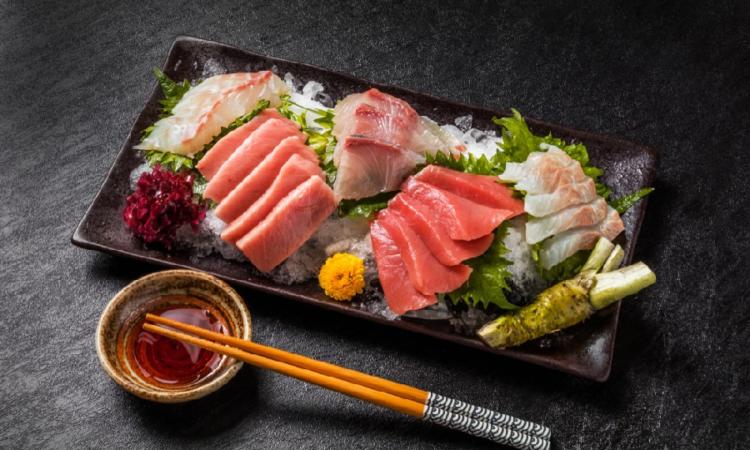
Almost any fish can be consumed as sashimi. Tuna, salmon and kingfish are commonly made use of for sashimi in Japanese dining establishments. But several of the very best sashimi delivery Singapore selections for sashimi are: scallop, squid, tuna, trevally, kingfish, bream, bonito, garfish, whiting, flounder, flathead, snapper and also leatherjacket.
Why is it safe to eat sashimi
However, have you ever before questioned why people consume sushi without a doubt however refuse at the suggestion of undercooked poultry? Or why individuals enjoy a steak so bloody it’s virtually mooing however a pork chop needs to be cooked till it’s basically a meat frisbee? Well, you’re not the only one– we, as well, have wondered the very same thing about raw fish vs. raw meat. And basically the answer comes all the way down to the smallest of factors: bacteria.
Presence of parasites and bacteria
This may gross you out, but the kinds of parasites and bacteria crawling around uncooked land creatures are much more toxic to humans than those found in fish Salmonella, E.coli, worms and even the virus hepatitis E can all populate raw meat.
Picking fish for your sashimi plate
This isn’t to claim that uncooked fish is totally without risk, however. Raw fish might still be carrying germs or parasite that can bring about gastrointestinal disorder or infection, so it is necessary to understand how to pick raw fish sensibly. If you’re interested to create your very own ceviche, for instance, make sure you patronize a premium fishmonger who understands that you’re intending on serving raw or cured fish. Otherwise, anything that has been flash-frozen is the safest.
After it is sliced, sashimi is almost always laid out as a type of landscape with 3 edible garnishes on the plate – ken, tsuma and karami – a base, a highlight and a spicy condiment.
Dressing to be used
Tsuma
Tsuma essentially means “spouse”, yet in the context of sashimi it describes a feature or foreground element grouped with the fish. Tsuma are smaller, often vibrantly coloured piles of little natural herbs, cresses or florals such as shiso (leaves, buds or florals) or benitade (a peppery purple herb). Tsuma are placed beneath the fish in the foreground, and can be utilized to flavour the fish as well.
Karami
Karami is any kind of pungent seasoning going along with sashimi. Wasabi, the intense green horseradish all of us recognize, is without a doubt one of the most prominent. However the type of karami offered will vary by fish and by region. Mountain wasabi (a huge brown-white root similar to Western horseradish) is preferred in the north of Japan, grated ginger is served with oily fish like sardine and bonito and the recommended karami for vinegared mackerel is warm mustard.

